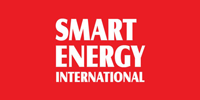
Energy storage deployments in the United States during the first quarter of 2019 were up 232% year-over-year, Wood Mackenzie Power & Renewable’s latest US Energy Storage Monitor shows. The market saw 148.8 MW deployed in Q1 of this year.
Each quarter, Wood Mackenzie Power & Renewables and the Energy Storage Association (ESA) gather data on US energy storage deployments, prices, policies, regulations, and business models. This information goes into the report.
The latest report found that the US energy storage market saw grew 6% quarter-over-quarter and 232% year-over-year. “California was once again the leading market, but Arizona, New Jersey and New York also posted strong growth,” according to the monitor.
In addition, the report found that Q1 2019 megawatt-hour deployments more than doubled year-over-year, but the market dropped 23% quarter-over-quarter after a rush of front of the meter (FTM) projects were completed at the end of 2018.
Thermal energy storage was dominated by a handful of key vendors, the report says. “In comparison to battery energy storage, thermal energy storage is a more efficient technology. Unlike batteries, which suffer round-trip efficiency losses, the materials needed for thermal energy storage are cheaper and last longer,” the monitor noted. “Furthermore, thermal energy technologies also do not have the same flammability and safety concerns that bear inherent risk in the case of lithium-ion battery systems.”
The report highlighted the following thermal storage vendors:
Water heater-related technology: A.O. Smith, Aquanta, Steffes, Daikin, and Rheem.
Cooling and refrigeration technology: Axiom Energy, Ice Energy, Viking Cold Solutions, and Calmac.
Solar thermal technology: SolarReserve, BrightSource Energy, Acciona, Siemens, and Abengoa Solar.
Other: 1414 Degrees, Malta, and PCM Products.
Looking ahead, the report forecasts that US energy storage annual deployments will reach over 4.5 GW by 2024, driven by utility procurements, changing tariffs, and grid service opportunities.
“Starting in the early 2020s the market will expand in states such as Massachusetts and New York that have recently initiated policy regimes, including incentive programs and greater opportunities for provision of wholesale market services from storage, which will create market upside,” the monitor says.
Nationwide, utilities are exploring the value that storage can provide, the report points out. “States as diverse as New Hampshire, Florida, and Texas all have utilities pursuing storage projects to increase electric system performance and create value for both utilities and their customers.”
read more











